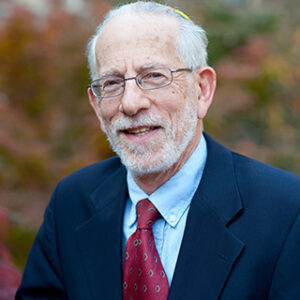Search Results
Back to JTS Torah Online's Main page
What’s the Masorah for?
Feb 16, 2018 By David Marcus | Commentary
The Masorah reflects the combined efforts of thousands of scribes known as Masoretes, working over hundreds of years, to establish a uniform and fixed version of the Hebrew Bible in the 6th-10th centuries CE. In order to ensure that the text they established would be transmitted correctly, the Masoretes counted every word, made copious lists, and wrote thousands of notes on the margins of the manuscripts.
I have transcribed, translated, and annotated some ten thousand of these notes in my multi-volume work, the first volume of which has just recently been published.
Read More
A Text That Mirrors Democracy
May 26, 2017 By David Marcus | Commentary | Bemidbar
The book of Numbers does not start with the word bemidbar, which occurs a little later in the first verse, but rather with vayedabber (“and he said”). In the standard Rabbinic Bible (Mikraot Gedolot), the first word of the book is introduced with an extraordinary flourish: The word vayedabber is printed in giant letters and enclosed in a decorative woodcut border in the shape of a parallelogram. This is surrounded by another rectangle consisting of two lines of Masoretic notations (traditional notes on the Biblical text) on each side; these notations are, in turn, surrounded by two biblical verses, one from Nehemiah and one from Daniel.
Read More
Bereishit with a Capital Bet
Sep 22, 2013 By David Marcus | Commentary | Bereishit
With this week’s parashah, we once again commence the cycle of reading the Torah from the first chapter of Genesis, which begins with the Hebrew word bereishit.
Read More
Prolepsis: How the Bible Tells Us the Future
Oct 31, 2012 By David Marcus | Commentary | Vayera
Regular screen watchers know that if in an opening scene the camera pans in on a detail like a dagger or a bicycle, then that detail—the dagger or the bicycle—will somehow have an important role to play later on in the movie. Known as foreshadowing, this cinematic technique has its parallel in literature in the rhetorical device known as prolepsis, which indicates a future event that is presumed to have occurred.
Read More
Forgiveness
Dec 31, 2011 By David Marcus | Commentary | Vayiggash
Parashat Va-yiggash continues the longest narrative in the Torah, that of Joseph and his brothers.
Read More
Strengthening Ourselves
Mar 5, 2011 By David Marcus | Commentary | Pekudei | Shabbat Shekalim
This Shabbat is one of beginnings and endings. It is a Shabbat of beginnings because it is the first of the four special Shabbatot preceding Pesah, and it is called Shabbat Shekalim. But this Shabbat is also a Shabbat of endings. The parashah for the week, Parashat Pekudei, describes the concluding stages of the construction of the Mishkan by the craftsman Bezalel and the entire band of Israelite workers.
Read More
Multiple Beginnings
Dec 5, 2009 By David Marcus | Commentary | Vayishlah
Attentive readers may note that our Parashat Va-yishlah does not start at the beginning of its chapter (Genesis 32), rather it starts four verses down with the words “va-yishlah Yaakov malachim lefanav” (Now Jacob sent messengers ahead of him). The actual chapter starts with the words “vayashkem Lavan babboqer” (Early in the morning Laban arose) (see the enumeration in Etz Hayim), and some printed Hebrew editions, such as the Koren Tanakh before 1992, and English Bibles, such as the King James Version and the New Revised Standard Translation, start the chapter with the next verse, “veYaakov halach ledarko” (Now Jacob went on his way). From these three beginnings we see that there are various ways of starting the story of Jacob’s meeting with Esau, the story with which our parashah commences.
Read More
Our Obligation to “Strangers”
Feb 21, 2009 By David Marcus | Commentary | Mishpatim
Last week’s parashah contained a magnificent description of the revelation at Mount Sinai. The scene was dramatic: The people were gathered at the foot of the mountain as Moses ascended. There was smoke, fire, thunder, and loud sounding of the shofar. Then God revealed Himself and gave the Ten Commandments. The Ten Commandments represent the first laws of the mutual covenant between God and Israel, and this week’s parashah contains more of these laws that collectively are known in English as “The Book of the Covenant” (sefer habrit). Our sages long ago pointed out that our parashah starts with the Hebrew word for and: ve’eleh hamishpatim (and these are the rules), indicating a direct connection between the Ten Commandments and the Book of the Covenant. Both were given on Sinai.
Read More
The Lesson of Egypt
Feb 25, 2006 By David Marcus | Commentary | Mishpatim
Last week’s parashah contained a magnificent description of the revelation at Mt. Sinai.
Read MoreSUBSCRIBE TO TORAH FROM JTS
Our regular commentaries and videos are a great way to stay intellectually and spiritually engaged with Jewish thought and wisdom.




